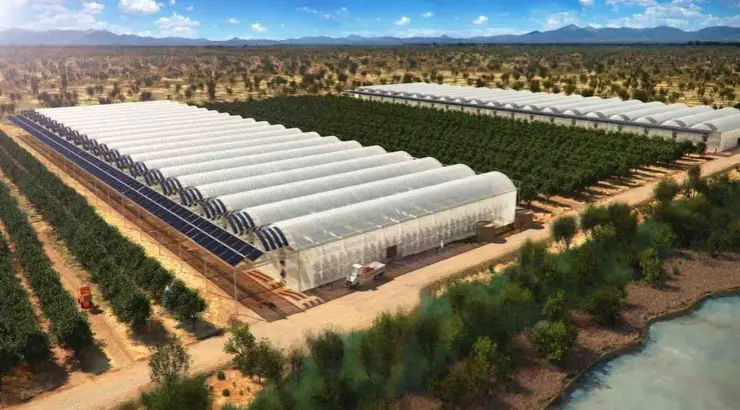Good News
This Cardboard Greenhouse Uses Saltwater to Grow Produce in the World’s Harshest Climates
“The idea is so simple that it’s rather insulting.”

(TMU) — As the fast-heating global climate increasingly becomes a problem, researchers are warning that severe and prolonged droughts could devastate global food supplies by the end of this century.
However, UK-based company Seawater Greenhouse has devised a method of growing fruits and vegetables in some of the world’s most arid desert climates, and its key ingredient is saltwater.
While the idea seems counter to common wisdom—in most circumstances, the salts in seawater cause plants to wilt and humans to dehydrate—saltwater is actually key to irrigating the company’s farms located in some of the most drought-stricken regions of the globe, including such infamously dry locales as Abu Dhabi, Somaliland, Oman, and South Australia.
The technology was developed in the early 1990s when designer-turned-inventor Charlie Paton began testing his method in Spain’s Canary Islands.
Rather than relying on the traditional glass used in greenhouses, these farms use thick walls of latticed cardboard that are dampened by the saltwater, using the evaporated water to keep the interior of the structures humid and cool.
Paton told Wired U.K.:
“The idea is so simple that it’s rather insulting.
People say, ‘If that’s going to work then somebody would have done it before’.”
As the moist cardboard panels of the structure cool down the wind blowing outside, a small pump powered by another one of the planet’s most abundant resources—solar power—brings in seawater from the coastline, which trickles down the cardboard walls, humidifying the interior of these novel greenhouses.
The simple yet effective method has allowed for Paton to effectively create a system that bears abundant amounts of produce in the middle of the desert—similar to an oasis.
In the meantime, as seawater is collected and recirculated through the cardboard panels, salt precipitates on the exterior of the walls—not only fortifying the damp cardboard, but also leaving behind sea salt that can then be sold in local markets.
Paton even believes that his invention can change the environment it’s in.
“You can see there would be a plume of cool air coming off the greenhouse,” he explained, noting that the greenhouses could eventually return regions that recently became barren back to their naturally vegetated state. And that, in turn, would absorb carbon emissions. He added:
“I believe that when you get to, say, 20 years, you’d have enough vegetation to do the job of the greenhouses because they’re creating shade and shared humidity–changing the climate.”
Paton believes that only 10 square miles (2,000 hectares) of these cardboard greenhouses would be required to feed Somaliland, where the population is roughly four million people.
However, organizations like the UK’s Department for International Development remain skeptical about the idea of a seawater-fueled greenhouse, and have rejected his multiple attempts to secure funding. Paton believes that there’s more than a bit of self-interest guiding their aversion to his invention.
Paton said:
“Have you heard of the Shirky Principle? It’s that institutions exist to preserve the problem to which they have a solution.
Sending food to starving countries is this knee-jerk reaction. How much have we sent to Somalia and Ethiopia, and what dent has it really made? If some of that humanitarian aid could instead be directed towards encouraging self-sufficiency, everyone would win.”
By Elias Marat | Creative Commons | TheMindUnleashed.com
Typos, corrections and/or news tips? Email us at Contact@TheMindUnleashed.com
